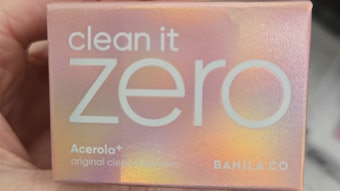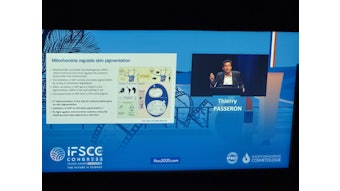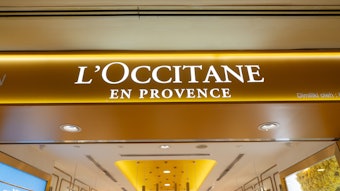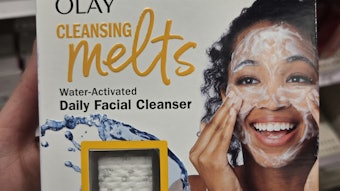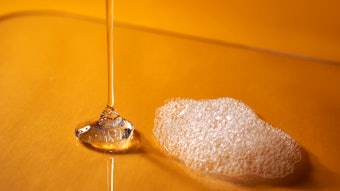
Considering the current trend toward environmentally friendly products, cosmetics based on natural ingredients are highly sought. Consumers demand better and more sustainable alternatives. In the same sense, some evidence has emerged that the use of bioactive ingredients from natural sources registers a greater biocompatibility than synthetic congeners, which has driven the cosmetic industry to search for compounds with biological activity derived from plants.
In addition, many skin care products are stabilized by synthetic surfactants. These must be added at a minimal concentration so as not to disrupt the skin barrier function and cause irritant reactions. Pickering emulsions, on the other hand, are surfactant-free liquid or semisolid systems stabilized by solid particles instead of classic emulsifiers. They therefore offer an alternative strategy for encapsulating bioactives in cosmetic formulations.
Quercus suber L., more commonly known as cork oak, is an important species, both economically and ecologically, in countries of the Mediterranean basin. Its bark, the cork, is obtained from the outer coating of the tree and is the basis for many profitable commercial products. In an ecological sense, cork oak has the capacity to regenerate after cork extraction, producing a new thick layer of its bark. Thus, the process of extracting the cork does not cause damage to the tree or the environment. It therefore provides a natural and sustainable source.
Cork oak has proven to be a material with a complex composition, consisting of suberin, lignin, polysaccharides and extractables. Suberin is the main component of the cork, being especially abundant in the wall of the cells that compose it. Substances such as glycerol, alkanols, α, ω-diacids, ω-hydroxy acids and ferulic acid are also important.
The interest in these natural compounds is due to their wide variety of relevant properties; namely, antioxidant, anti-inflammatory, free radical scavenging, enzyme inhibiting and antimicrobial. Indeed, several studies have confirmed that extracts obtained from Q. suber bark demonstrate antioxidant and anti-inflammatory as well as anti-aging and antifungal properties—all from a naturally occurring and sustainable material. Extracts from cork oak are composed mainly of aliphatic and phenolic compounds, including terpenes such as friedelin and botulinum acid; tannins, namely ellagitannins; and phenolic acids such as gallic, ellagic and protocatechic. Phenolic acids, suberin and terpenes are known to impart antioxidant activity, which in turn inhibits the oxidation of other molecules.
As such, Quercus suber bark (QSB) was examined for these capabilities in skin care and, unexpectedly, also found to stabilize Pickering emulsions, as will be shown. The heterogeneity of its chemical composition and its extraordinary properties make QSB a material with great potential for several industries. Moreover, it has been shown to not cause topical adverse effects, such as allergic or irritative reactions. Taken together, these attributes have gained growing interest for the material both in nutraceutical and cosmetic applications.1-6
Materials and Methods
Materials: To assess the efficacy of QSB to stabilize Pickering emulsions and impart antioxidant benefits for skin care, samples of the extracta were obtained and caprylic/capric acid triglyceride (CT)b was provided gratis. 2',7’-Dichlorodihydrofluorescein diacetate (H2-DCFDA)c was sourced, and spontaneously immortalized human keratinocyte HaCaTd cell lines were used for antioxidant assays and to determine the chemical stability of emulsions.
Experimental design: In this work, a quality by design (QbD) approach was applied for the production of the test emulsion (see Formula 1). A screening design was carried out to identify the critical variables of the formula and process that affected the critical quality attributes of the emulsion; i.e., droplet size distribution. The formula was then optimized using a two-factor Central Composite Design (CCD). For formula optimization, the percentages of oil phase and QSB particles were the independent variables analyzed.
Quercus suber bark lowered the droplet size distribution of the test emulsion.
To investigate the variables affecting the responses studied, the CCD comprised five levels coded as −α, −1, 0, 1 and +α, for the formula, with CT as the oil phase. The data was analyzed using softwaree and statistical analysis was considered significant when the estimated p values were lower than an α error of 0.05.
Stability assessment of optimized formulation: To assess the stability of the optimized formulation, three batches of the same QSB emulsion produced under the same conditions were prepared and their respective droplet size distributions were measured at different times for a duration of one month; each batch was analyzed at 0, 14 and 30 days using a particle size analyzerf.
The default refractive index used was 1.52; for the correct turbidity, corresponding to an obscuration between 10-20%, the sample was added to the chamber containing purified water. The readings were performed under mechanical stirring (1750 rpm) and ultrasound (25%). Data was expressed in terms of relative distribution of volume of particles in the range of size classes, and given as diameter values corresponding to percentiles of 10, 50 and 90. The span value is a useful statistical parameter to characterize the particle size distribution, and it was calculated using the equation:
Span = (d(90) − d(10))/(d(50))
Antioxidant activity: The potential of QSB-stabilized emulsions to protect HaCaT cell lines against oxidative damage was investigated in vitro. The intracellular production of reactive oxygen species (ROS) within cells was evaluated via a fluorimetric technique using H2-DCFDA.7 HaCaT subconfluent cells grown in 96-well plates were incubated for 30 min with 20 μM of H2-DCFDA in the dark at 37ºC. Hydrogen peroxide (H2O2) solution (500 μM) was used to induce ROS in cells.
Another assay was performed using UVB radiation as a physical inducer of antioxidant stress. Three UVB lampsg with a peak emission at 312 nm were employed as the UVB source and measured with a radiometerh. Normal cell medium was used as negative control and ascorbic acid (AA) was used as positive control. These results were reported as mean ± standard deviation.
Physicochemical characterization: pH measurements were taken using a pH meterj and the apparent viscosity and rheological profile of the QSB emulsions were evaluated at room temperature using a viscosimeterk.
Safety: Finally, a safety evaluation study of the QSB emulsion was performed using the Marzully and Maibach HRIPT protocol. Briefly, the product was applied to the backs of 51 healthy volunteers who had given informed written consent. For the induction period, a series of nine standard Finn Chamber patch tests was performed over a period of three weeks. Reactions after patch-testing were scored according to International Contact Dermatitis Research Group. A two-week period of rest was then maintained without application of the test emulsion.
The process of extracting cork does not damage the tree or environment and therefore provides a sustainable source.
During the challenge period, new patches were prepared and fixed in the same manner as in the induction period, but also on virgin skin sites. This protocol was approved by the local ethics committee and respected the Helsinki Declaration and AFSSAPS regulations on HRIPT studies performed using cosmetic products. The study also was conducted under the supervision of a dermatologist who evaluated irritation/allergic reactions to the emulsions.
Sensory attributes: Lastly, 38 volunteers rated the QSB emulsion for sensory attributes such as fragrance, consistency and stickiness; skin feel during application, i.e., ease of application, spreadability and oiliness; skin feel after application, i.e., hydration, softness of the skin and freshness; and the subject’s willingness to purchase the product. Ratings were provided on a scale from 1 to 4. Sensory parameters were evaluated by applying a small amount of the QSB emulsion to the back of the hand, then rubbing it in until totally absorbed.
Results: Stabilizing, Antioxidant, Sensory and Safety
The stability studies demonstrated that an increase in QSB particle concentration increased the stability of the emulsion, since it lowered the droplet size distribution (see Figure 1). In vitro assessments revealed the QSB-containing emulsion showed antioxidant activity, and therefore, presumably, the capacity to inhibit the oxidation of other molecules (see Figure 2). This could be explained by the presence of several phenolic acids, suberin and terpenes in the QSB.
Further, the physicochemical characterization by panelists (n = 38) showed the QSB-containing formula was a shear-thinning fluid, ideal for topical administration. Finally, in vivo evaluations confirmed the QSB emulsion was nonirritating, as well as easy to apply and quick to spread, giving a feel of softness and hydration to the skin (see Figure 3).
Conclusions
In the present work, the use of QSB particles as a multifunctional solid ingredient contributed to the formulation of a stable, effective and innovative Pickering emulsion—with meaningful synergistic protection against oxidative stress. In vitro studies revealed QSB demonstrates antioxidant activity and the capacity to inhibit the oxidation of other molecules. The present findings, combined with data reported so far, enrich existing knowledge about the potent antioxidant action of QSB and highlight that topical Pickering emulsions stabilized by eco-friendly particles could be a promising area for the cosmetics industry.
Acknowledgements: This work was partially supported by iMed.ULisboa (UID/DTP/04138/2013) from Fundação para a Ciência e a Tecnologia (FCT), Portugal.
References
- Pereira, H. (1988). Chemical composition and variability of cork from Quercus suber L. Wood Sci. Technol. 22, 211–218.
- Santos, S., Pinto, P., Silvestre, A., et al. (2010). Chemical composition and antioxidant activity of phenolic extracts of cork from Quercus suber L. J Industrial Crops and Products 31, 521-526.
- Castola, V., Marongiu, B., Bighelli, A., et al. (2005). Extractives of cork (Quercus suber L.): Chemical composition of dichloromethane and supercritical CO2 extracts. J Industrial Crops and Products 21, 65-69.
- Subhashini, S., Begum, S. F. M. and Rajesh, G. (2016). Antimicrobial characterization combining spectrophotometric analysis of different oak species. Int Journal of Herbal Medicine 4, 32-35.
- Carriço, C., Ribeiro, H. M., and Marto, J. (2018). Converting cork by-products to ecofriendly cork bioactive ingredients: Novel pharmaceutical and cosmetics applications. Industrial Crops and Products 125(1), 72-84.
- Marto, J., Ascenso, A., Simões, S., Almeida, A. J., and Ribeiro, H. M. (2016). Pickering emulsions: Challenges and opportunities in topical delivery. Expert Opinion on Drug Delivery 13, 1093-107.
- Marto, J., Ascenso, A., and Ribeiro, H. M. (2016). Melatonin-based Pickering emulsion for skin’s photoprotection. Drug Delivery 23, 1594-1607.


